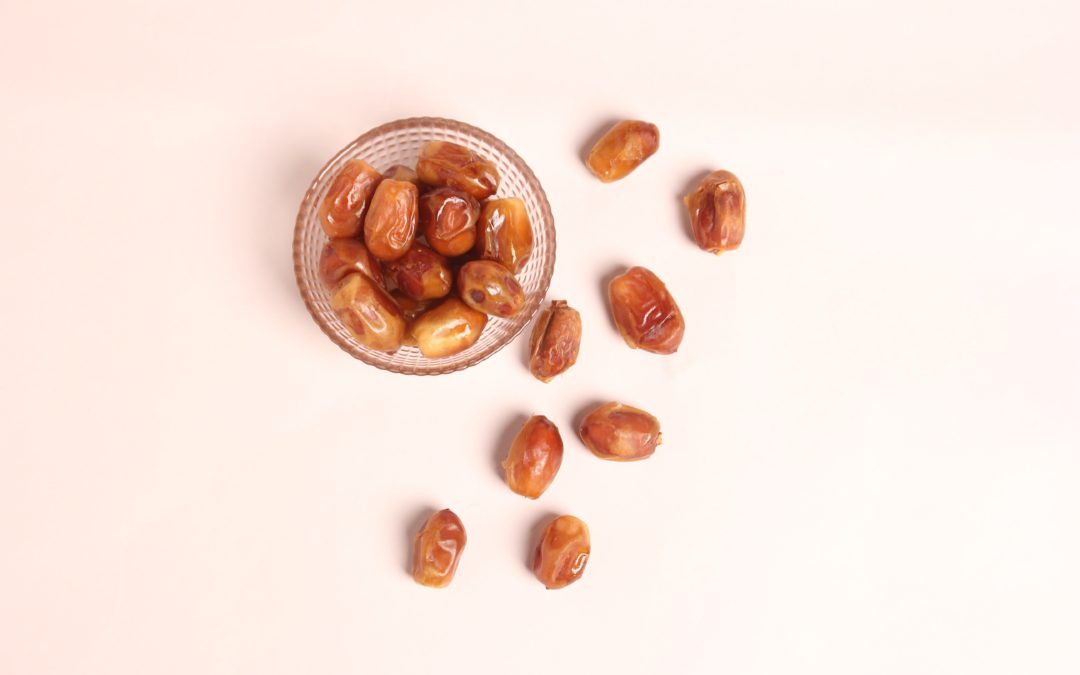Most expectant moms I know aren’t hoping for 42 weeks of labor. Sometimes there are medical conditions being monitored like high blood pressure, pre-eclampsia and related issues, gestational diabetes, which might be a cause for induction. Other times, you get tired of being pregnant. So you may seek out ways to get labor started at home- a natural induction.
Hear the episode of “Musings of a Black Doula” on Natural Inductions:
If you’re planning a hospital birth, there are medical methods to do what we call an induction– that’s when medicine is used to help your body prepare for and go into labor. But there are also lots of things floating around as alternatives to hospital induction.
So do these folklore/ traditional remedies/old wives tales/ internet gossip “work” to start labor? What do they do? And are natural inductions safe?
As an important general warning for ANYTHING you find on the internet- if something is effective at altering your pregnancy, health or labor, then treat it like it’s going to work! So if you’re trying to get labor going, please keep your midwife, OBGYN or medical provider in the loop. Some of the techniques for natural induction do have cautions associated with them.
First, let’s discuss why labor begins.
While we don’t know for certain, here are the top three theories:
- Traditionally it was thought mother’s body started labor. Specifically the thought was that when it was time, the birth person’s pituitary gland secreted oxytocin, which causes contractions and results in cervical change.
- Newer research suggests that the fetus’s lungs start the process, since the baby’s lungs are the last organ to develop in utero. When they are formed, they send a signal that begins labor.
- Some scientists believe that a baby’s adrenal gland sends a signal when their brain activity reaches full development, and the fetal release of cortisol disrupts the maternal hormone balance, which triggers labor.
When is a normal time period for labor to start?
- Anything from 37 weeks gestation, to 42 weeks is considered normal. Going beyond 40 weeks in pregnancy is very common and normal, and even more so for first time mothers.
- When is it “too long” to be pregnancy? After 42 weeks, there may be concerns about fetal size, amniotic fluid, age of placenta and “post-maturity syndrome”.
I compiled a list based on what I’ve learned over the years as a labor doula, and also dive into the mommy forums. Some of these techniques encourage labor to begin which is a natural labor induction. Other techniques are suggested to make labor easier or faster- which is considered an augmentation. It matters because if you’re wanting to get labor started, there are different approaches than if you need to encourage a labor that’s already happening.
Red Raspberry Leaf Tea for Natural Labor Augmentation
This herbal tea’s goal is to tone the uterus. The uterus is a muscle, and so a stronger toned uterus is more effective. The theory is that when contractions begin, they will be stronger, resulted in a shorter labor.
- A study published in 2001 in 108 mothers found it to be effective at shortening labor. https://pubmed.ncbi.nlm.nih.gov/10754818/
- Another study, a systematic review including studies published between 1941 and 2016 found neither benefits nor harm- https://pubmed.ncbi.nlm.nih.gov/33563275/
Research suggests that drinking 1-2 cups of red raspberry leaf tea beginning at 32 weeks of pregnancy may help, and is unlikely to cause harm.
Okra Water for Pregnancy
I first saw okra water for induction on tik tok. Mostly I’ve seen Black women discussing it, and it sounds Black and southern to me, but I’ve not found the roots of it. The idea is that you soak okra in water, and the sliminess improves vaginal lubrication. As a childbirth educator, I’m not sure about the effectiveness of this method. More than lube, what we need for labor is dilation.
But okra is high in folate, which can help prevent brain defects and that’s a positive. You would want to eat okra during conception and the first trimester to receive folate benefits.
Dates for Improving Labor
Eating dates during pregnancy to improve labor has recently grown more popular. A study was published in 2011 of 69 women, who consumed 6 dates per day in the 4 weeks prior to EDD. They were more dilated than the 45 who’d consumed no dates, and more likely to experience spontaneous labor.
Please note two things- this was a small study and not a randomized control trial. Also, dates are high in sugar so if you’re controlling gestational diabetes through diet, be aware of that and consult your medical provider. But if you’d like to follow the study, begin consuming 6 dates per day in week 36 to encourage natural induction and a shorter labor.
Evening Primrose Oil for Natural Induction
Gamma linolenic acid is thought to be the active ingredient in this plant and evening primrose oil is often recommended for cervical ripening. Cervical ripening can improve your body’s readiness for labor (and is often the first step in an induction done in the hospital).
I’ve heard this recommended throughout my doula career, and often by midwives. There’s recently been research on both oral and vaginal use of EPO, include randomized controlled trials. Evidence Based Birth did a great podcast episode on this, which I’ll link, that dived into the studies on both oral, and vaginal use.
While the jury is still out- the studies are small, it seems like the evidence is primarily in favor of oral insertion of EPO.
This is something that should be discussed with your provider, as there may be risks if you take anti-platelet and anticoagulant drugs, both of which are commonly recommended for Black women since we have higher rates of pregnancy induced hypertension and pre-eclampsia.
Nipple Stimulation to Begin Contractions
We know exactly why nipple stimulation would work to encourage contractions.
Oxytocin is a hormone that causes lots of things, most relevant to labor- contractions. It’s released during many activities, one of which is when babies feed directly at the breast. Oxytocin causes your milk to let down, and so nipple stimulation is using this well established way that we know your body works to produce oxytocin.
In a recent study published in 2022, women were assigned to nipple stimulation therapy were asked to stimulate with an electric breast pump or by hand for periods of at least 30 minutes, with breaks as needed for up to 15 minutes at a time, for at least a cumulative 2 hours before considering initiation of oxytocin, and to complete intrapartum diaries. These women required on average 69 minutes of stimulation before contractions reached a frequency and intensity compared to those using pitocin.
In my opinion, because it’s not an instant gratification remedy, and does require some effort, it’s best used for what we call labor augmentation- increase how frequent and effective your contractions are. And it can be an alternative to pitocin (which is artificial oxytocin used as a medication).
Pineapple for Induction
Traditional recommendation in some cultures, including those of Trinidad and India to terminate pregnancy (by causing contractions). The idea is that bromelain would be the active ingredient in pineapple, and it would contribute to cervical ripening, that can help start a natural induction. However the research has primarily been performed on rats, and didn’t find good evidence. I would caution folks with gestational diabetes to consult their provider first.
Sex for Induction
Sex for induction is another instance where we’re using the body’s ability to produce oxytocin. For clarity: when I say sex, the most effective kind for the purposes of labor induction is penetrative sex that involves a penis and vagina, without a condom or other barrier method. (That all sounds so clinical, but clarity matters more than sexiness in this case!)
Even without a penis, orgasms will produce oxytocin, which can lead to contractions. But there is an added benefit of semen, because semen has a lot of prostaglandins, which are a hormone known to induce labor.
A 2019 meta-analysis which looked at lots of studies on the subject, did not find that intercourse was effective, but they did not find any harm.
My recommendation is that if you want to have sex, or an orgasm, go for it. It won’t hurt, as long as your water has not broken (in which case avoid inserting anything into your vagina). But if you’re not feeling it, avoid this method.
Yoga ball Bouncing During Labor
Using a birth ball (which is the same as a yoga ball or exercise ball) is a common recommendation. On social media, I often see if described as bouncing. As a doula, I typically tell clients to do hip circles, or figure 8s (imagine moving your hips like you are keeping a hula hoop up).
According to a study published in 2021, the use of a birthing ball was found to be effective for women who were already undergoing induction.
Walking/ Curb Walking for Labor
According to a study published in 2021, “Walking during late pregnancy could improve Bishop score, increase spontaneous onset of labor, and decrease induction, cesarean, and instrumental delivery without having any adverse effect on the neonate’s Apgar score.”
Staying active with a light exercise like walking is great for most pregnant women. My caution with walking is always NOT to wear yourself out. Labor is typically a marathon, not a sprint (and sprinting labors are tough anyway.) So light activity is a great idea as a consistent practice. Trying to cram all the walking in during early labor might exhaust you.
Spicy Food to Begin Labor
When it comes to spicy food, I say eat what you like. Spicy food may get your bowels going, and stimulating bowels could stimulate contractions, but not necessarily the sort of contractions that produce labor, and get your baby to you.
If you do think you’re going into labor, I don’t recommend eating new foods, things likely to cause nausea, or that would hurt if you vomited or pooped them out, because ALL of those things are a normal part of labor.
Chiropractors and Acupuncturists for Induction
Based on my own experience as a doula, I think more pregnant folks should consider getting help from a professional to encourage labor, or create conditions for their baby to encourage labor.
I’ve seen acupuncture work very effectively for clients, and know moms who swear by induction massage. Chiropractic care can also aid in smooth labors.
I DO NOT advise using castor oil for induction.
Castor oil is also used an effective laxative, and could cause vomiting, diarrhea, nausea in addition to the typical discomforts of late pregnancy and labor. In addition, it may cause stress to the baby. It’s also possible that it could produce contractions that aren’t going to get longer, stronger, closer together, and result in meeting your baby.
If you’re wondering what I recommend to doula clients who want a natural induction?
- Rest and give your baby time. If you don’t need an induction for medical reasons, time is your friend.
- An acupuncturist and chiropractor are generally good ideas (and as professionals, they’ll tell you if they’re not a good fit for your pregnancy)
- Walk during pregnancy if it feels good. Use a birthing ball, because open hips can’t be a bad thing.
- If you’re going to use EPO, dates, go for it, but make sure you talk to your doctor because we don’t want to ignore any contraindications.
- And if you feel like having sex, enjoy! Maybe it will contribute to a natural induction! But not after your water breaks, to lower the chance for infection.
For more tips during pregnancy and birth, consider hiring a labor doula at DC Metro Maternity.


